Riverside Ribadavia, Spain
Northwest Spain holds so many treasures along its winding Atlantic coast, from big cities like A Coruña and Santiago de Compostela (okay, half an hour inland) to natural wonders like the Cíes Islands and the Ézaro waterfall. These are all fine and wonderful—I didn’t live and work in this part of Spain for two years for nothing!—but the further inland you go, the more cozy and comfortable Galicia gets.
La Galicia profunda—Deep Galicia, as locals call it—contains lush, old-growth forests and thriving vineyards, dying villages and the region’s third-largest city, oppressive summer heat and fondant layers of winter snow. It was here that hermits fled worldly pleasures for lives of isolation and prayer, yet here today that Carnival celebrations are their most colorful. Sometimes, on dark rainy evenings, you swear you caught a glimpse of the Santa Compaña, the procession of dead spirits passing through the woods.
Ribadavia is one of many villages in this part of Galicia, one that will make you feel home as soon as you hop out of the car (or the train, which stops in this tiny village!). The town will welcome you with a glass or two of Ribeiro wine, the foundation of the local economy in the Middle Ages, and it will invite you to wander through its cool, shaded streets on a hot summer day.
This pueblo sits on a commanding point at the confluence of the Miño and Avia rivers, and one of these rivers forms the root of the town’s name: Riba d’Avia. For the longest time I never could parse town names in northern Spain like Ribadeo or Ribadesella, until I realized that “riba-” means “river banks” and “-de-” means “of.” Duh. Ribadavia means “On the banks of the Avia River,” Ribadeo means “On the banks of the Eo River,” and so on.
The town castle used to overlook the Avia River…until it was abandoned in the 1600s by the Counts of Sarmiento for a more stately palace in the main square. The castle’s battlements are crumbling, stone-hewn sepulchers from the Dark Ages lie open to the elements, and old chapel belfries stand sentry.
Jewish Galicians lived here for four centuries and helped make Ribadavia into the thriving economic center it was in medieval times—up until they were forcibly expelled in 1492. No trace remains of their time in Ribadavia, almost certainly erased by the Inquisition, but modern Spain has recognized their contribution and installed small plaques on the sidewalks with the logo for the Red de Juderías de España, a network of towns across Spain with Jewish quarters.
One ribadaviense pays homage to the town’s forgotten heritage by operating a bakery that sells Jewish-inspired pastries and breads. Herminia’s simple but tasty cookies feature almond flour, dates, sesame, or cardamom, and her baked goods draw on authentic Jewish recipes that folks come from all over Europe to try.
The synagogue may be lost, but several significant churches from this period of convivencia or living-together-ness remain. This might seem surprising since Ribadavia is tiny by today’s standards, but being the center of the wine trade in the Middle Ages came with a few perks.
The Church of Santo Domingo wasn’t too far from where my friends and I parked our rental car, so we peeked in right before Sunday mass was about to begin and were greeted by some glorious morning light filtering in through the windows in true Gothic fashion. I giggled at the “you don’t need your cellphone to talk with God, so put it on silent” sign in the narthex.
While parishioners were communing with the Lord sans cellphones, stray kitties romped about the streets and gave us an informal guided tour of the old town, taking us through secret passageways and past centuries-old chapels that opened onto tiny plazas.
Our stray-cat wanderings throughout the old town ended up at a bar—this is Spain, where else?—called A Papuxa. This musty, dark tavern looked as if it hadn’t been dusted since 1915, but its naturally-cool interior was a welcome respite from the unnaturally-warm town streets, so my friends and I stepped over the threshold and popped a squat on a tableside bench.
On the floor were barrels of local Ribeiro wine with serve-yourself taps, so we grabbed ceramic cuncas (traditional wine glasses) and filled up bowlfuls of the good stuff. It paired perfectly with a slice of the empanada of the day: octopus-filled meat pie.
We followed up this octopus appetizer with a main course of even more octopus. After all, the best pulpo in Galicia isn’t found on the coast; instead, the inland provinces make it best—so when you’re in and around Lugo and Ourense, eat up!
Meson O Pucheiro seemed like the logical choice for lunch, what with all the bright-orange bombonas or butane tanks out front fueling the flames that kept the gigantic copper pot at a slow boil, perfect for cooking octopus in. Served on a wooden platter (which soaks up the water but leaves the extra-virgin olive oil behind), this serving of polbo á feira was a lovely dessert course for our visit to Ribadavia.
My friends and I drove here, but you could totally take the high-speed train from Santiago de Compostela and then transfer at Ourense to the slow diesel train that skirts the Miño river canyon on its way to Vigo.
What do you think of Ribadavia? Are you a fan of Galician-style octopus? Tell me down below in the comments thread!
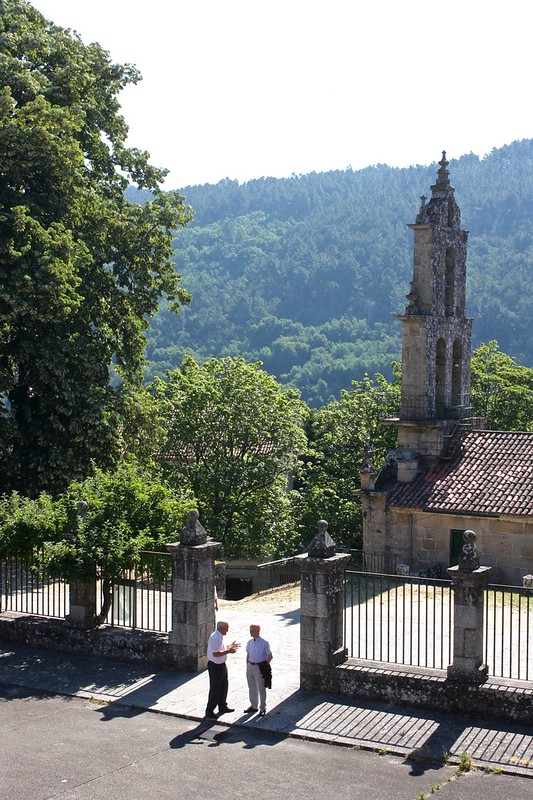
 |
| An important conversation |
La Galicia profunda—Deep Galicia, as locals call it—contains lush, old-growth forests and thriving vineyards, dying villages and the region’s third-largest city, oppressive summer heat and fondant layers of winter snow. It was here that hermits fled worldly pleasures for lives of isolation and prayer, yet here today that Carnival celebrations are their most colorful. Sometimes, on dark rainy evenings, you swear you caught a glimpse of the Santa Compaña, the procession of dead spirits passing through the woods.
Ribadavia is one of many villages in this part of Galicia, one that will make you feel home as soon as you hop out of the car (or the train, which stops in this tiny village!). The town will welcome you with a glass or two of Ribeiro wine, the foundation of the local economy in the Middle Ages, and it will invite you to wander through its cool, shaded streets on a hot summer day.
A ruined castle
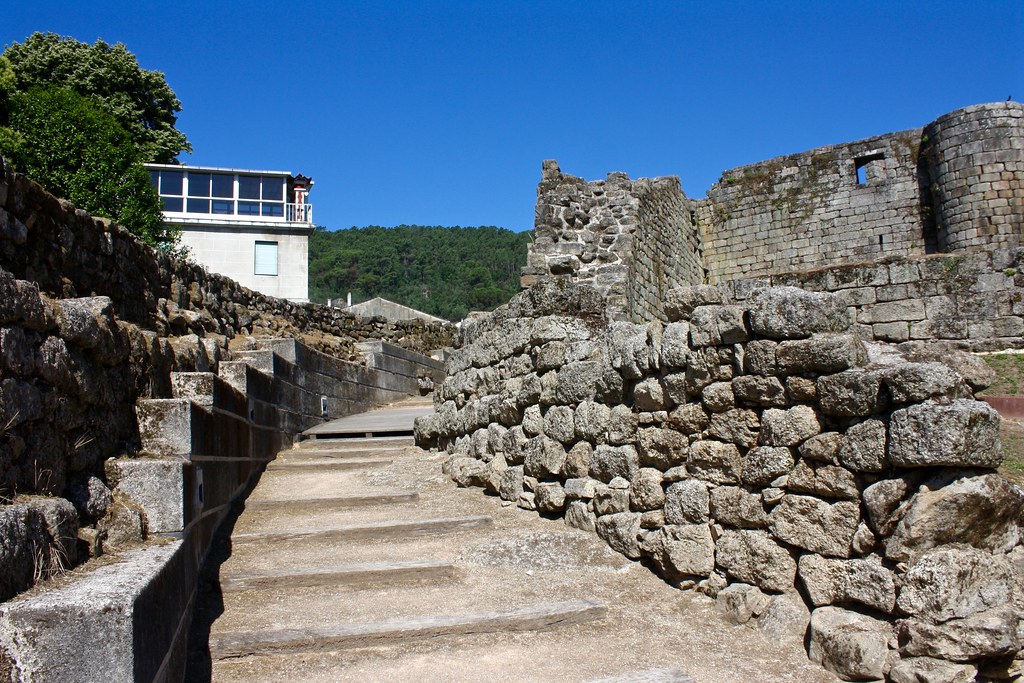 |
| What little remains of the walls |
This pueblo sits on a commanding point at the confluence of the Miño and Avia rivers, and one of these rivers forms the root of the town’s name: Riba d’Avia. For the longest time I never could parse town names in northern Spain like Ribadeo or Ribadesella, until I realized that “riba-” means “river banks” and “-de-” means “of.” Duh. Ribadavia means “On the banks of the Avia River,” Ribadeo means “On the banks of the Eo River,” and so on.
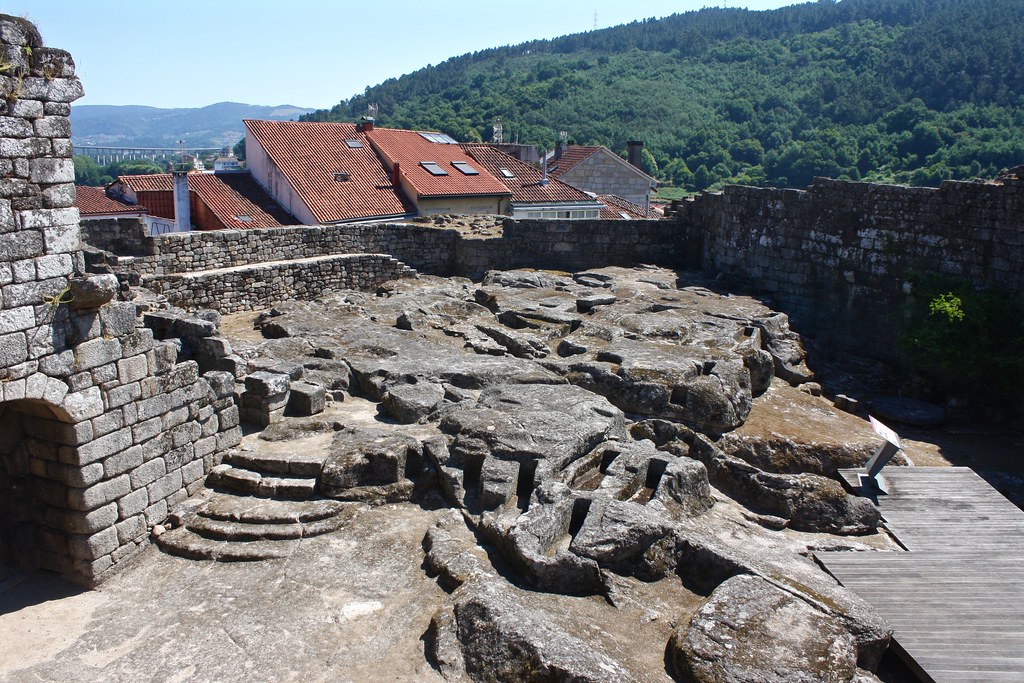 |
| Ribadavia Castle |
The town castle used to overlook the Avia River…until it was abandoned in the 1600s by the Counts of Sarmiento for a more stately palace in the main square. The castle’s battlements are crumbling, stone-hewn sepulchers from the Dark Ages lie open to the elements, and old chapel belfries stand sentry.
A lost & found Jewish heritage
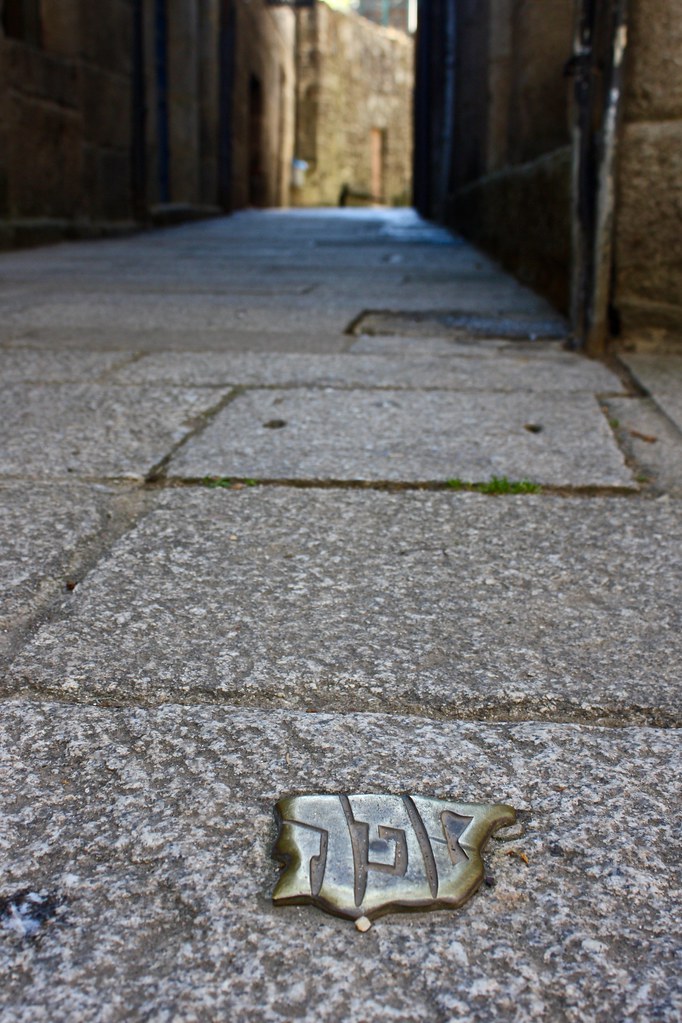 |
| Jewish quarter plaque |
Jewish Galicians lived here for four centuries and helped make Ribadavia into the thriving economic center it was in medieval times—up until they were forcibly expelled in 1492. No trace remains of their time in Ribadavia, almost certainly erased by the Inquisition, but modern Spain has recognized their contribution and installed small plaques on the sidewalks with the logo for the Red de Juderías de España, a network of towns across Spain with Jewish quarters.
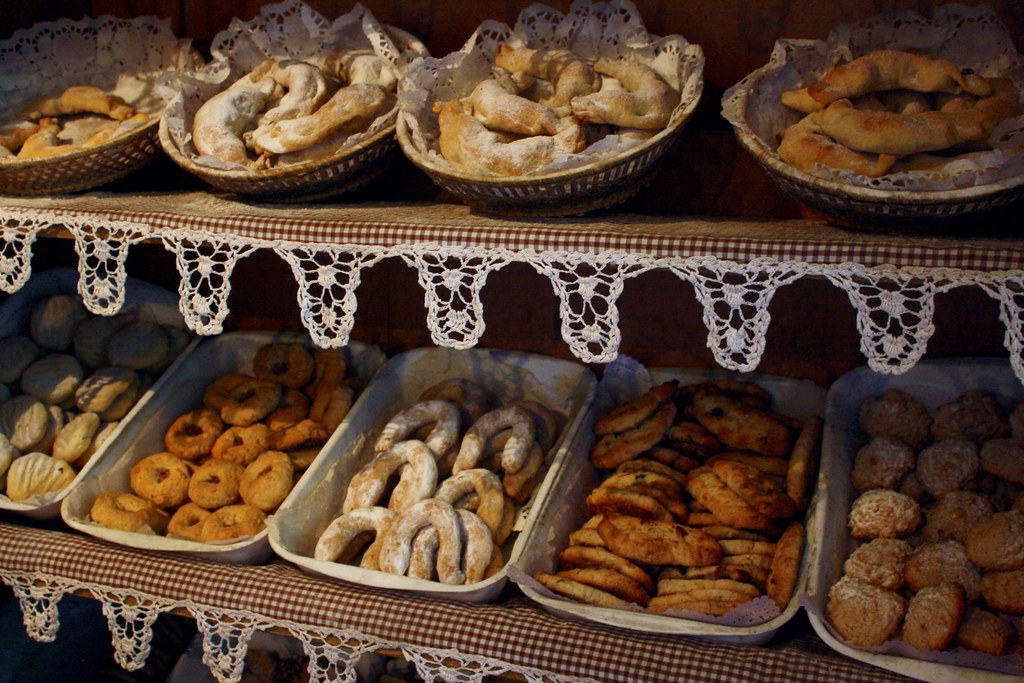 |
| A Tafona da Herminia |
One ribadaviense pays homage to the town’s forgotten heritage by operating a bakery that sells Jewish-inspired pastries and breads. Herminia’s simple but tasty cookies feature almond flour, dates, sesame, or cardamom, and her baked goods draw on authentic Jewish recipes that folks come from all over Europe to try.
Cozy medieval churches
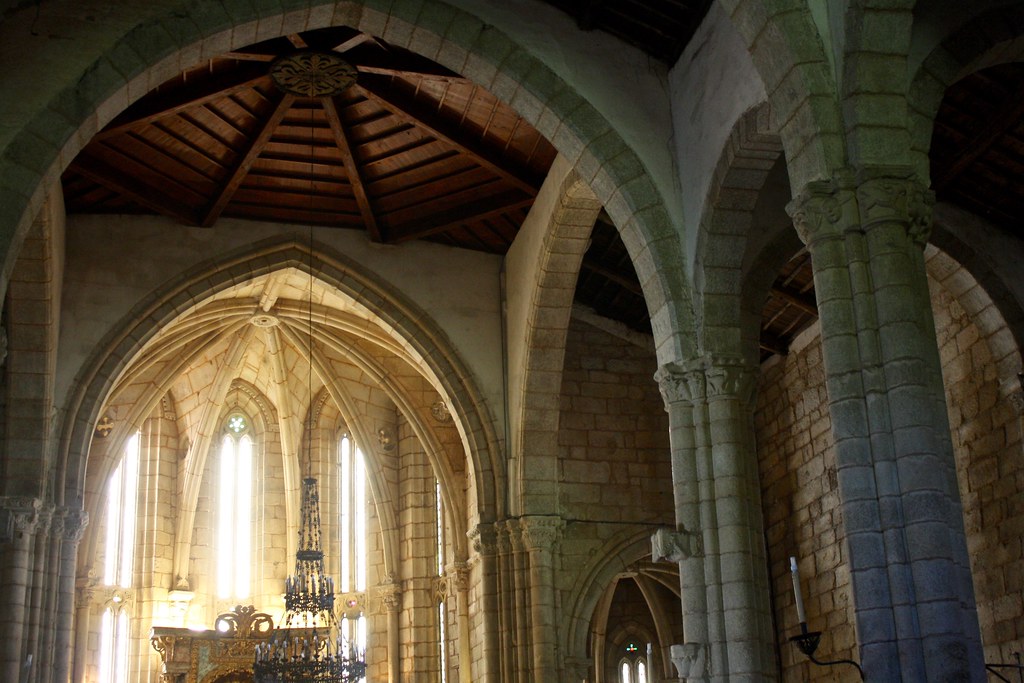 |
| Morning light |
The synagogue may be lost, but several significant churches from this period of convivencia or living-together-ness remain. This might seem surprising since Ribadavia is tiny by today’s standards, but being the center of the wine trade in the Middle Ages came with a few perks.
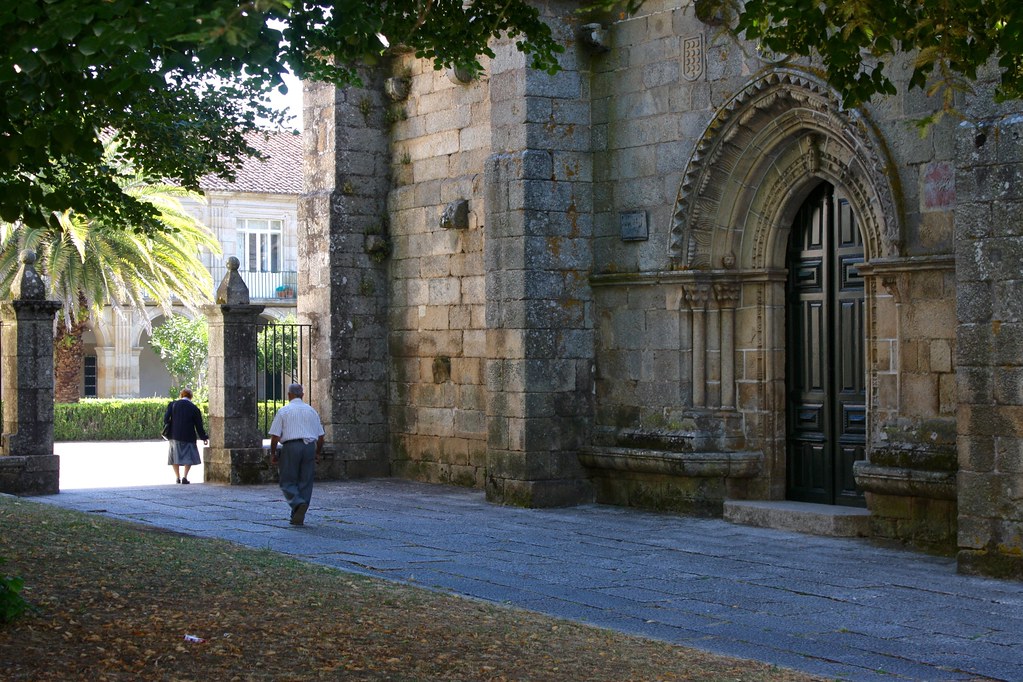 |
| Walking to church |
The Church of Santo Domingo wasn’t too far from where my friends and I parked our rental car, so we peeked in right before Sunday mass was about to begin and were greeted by some glorious morning light filtering in through the windows in true Gothic fashion. I giggled at the “you don’t need your cellphone to talk with God, so put it on silent” sign in the narthex.
Charming village atmosphere
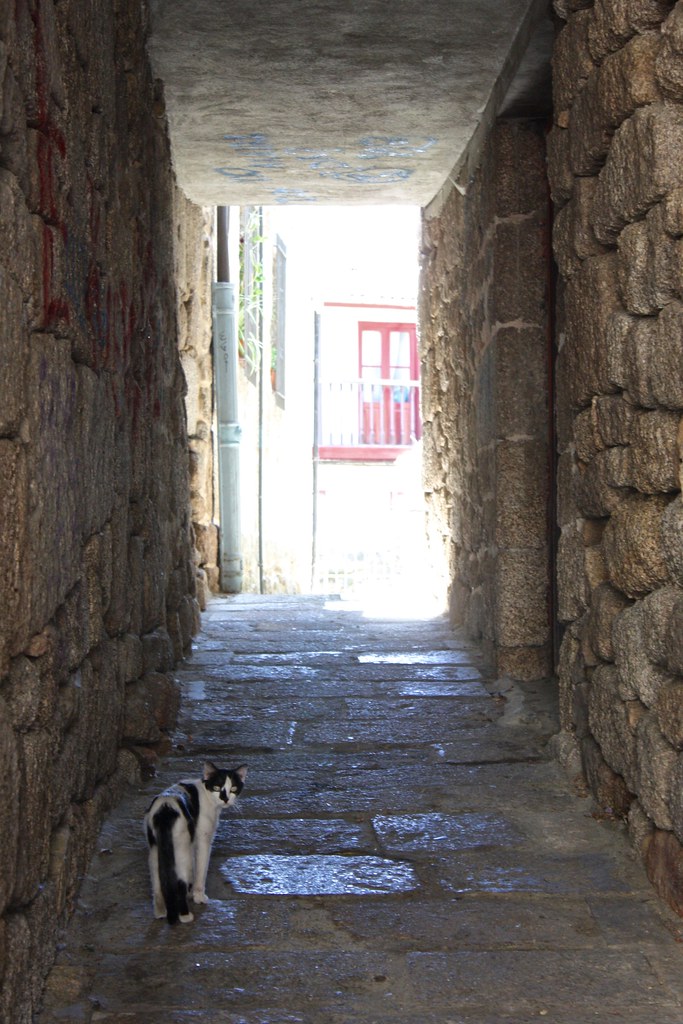 |
| This kitty gave us a guided tour of the town |
While parishioners were communing with the Lord sans cellphones, stray kitties romped about the streets and gave us an informal guided tour of the old town, taking us through secret passageways and past centuries-old chapels that opened onto tiny plazas.
 |
| Drinking a cunca of house Ribeiro wine |
Our stray-cat wanderings throughout the old town ended up at a bar—this is Spain, where else?—called A Papuxa. This musty, dark tavern looked as if it hadn’t been dusted since 1915, but its naturally-cool interior was a welcome respite from the unnaturally-warm town streets, so my friends and I stepped over the threshold and popped a squat on a tableside bench.
On the floor were barrels of local Ribeiro wine with serve-yourself taps, so we grabbed ceramic cuncas (traditional wine glasses) and filled up bowlfuls of the good stuff. It paired perfectly with a slice of the empanada of the day: octopus-filled meat pie.
Excellent octopus
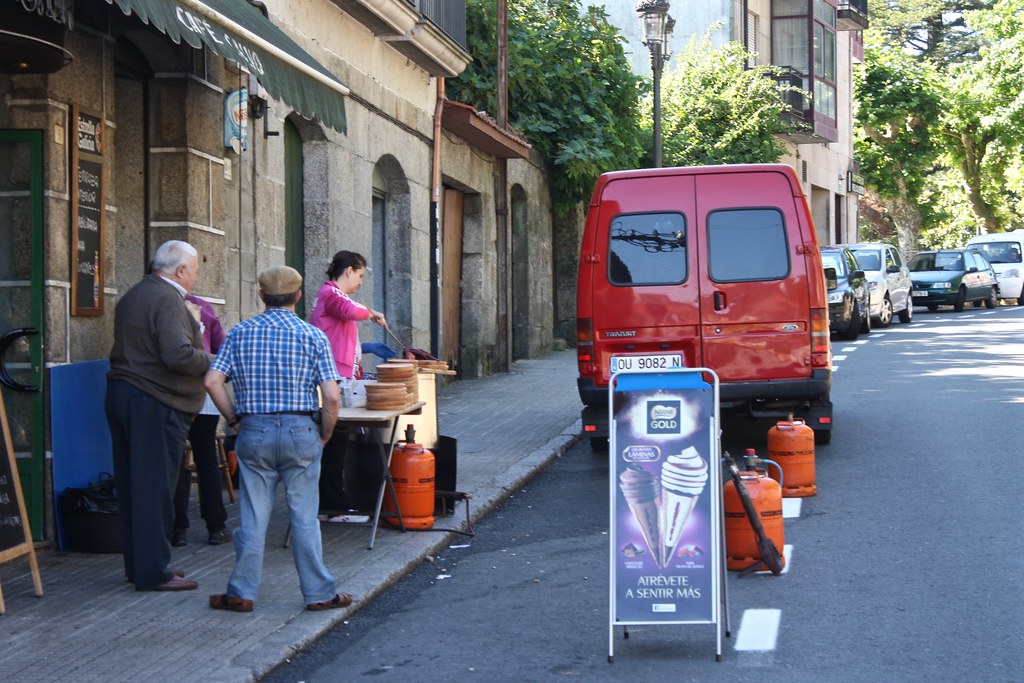 |
| Boiling the octopus |
We followed up this octopus appetizer with a main course of even more octopus. After all, the best pulpo in Galicia isn’t found on the coast; instead, the inland provinces make it best—so when you’re in and around Lugo and Ourense, eat up!
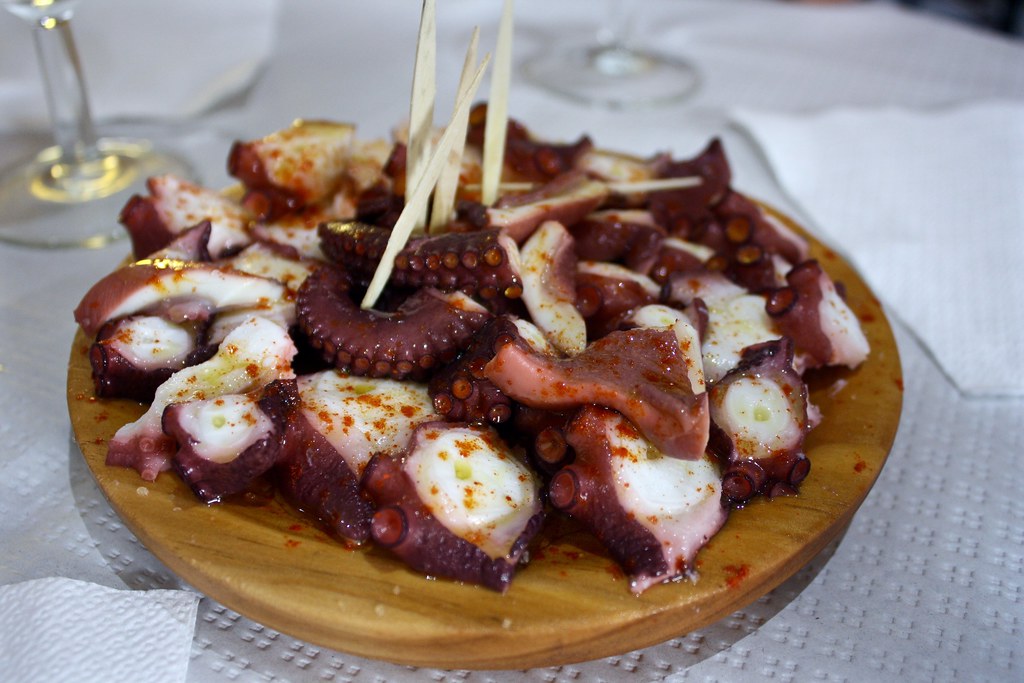 |
| A platter of the good stuff |
Meson O Pucheiro seemed like the logical choice for lunch, what with all the bright-orange bombonas or butane tanks out front fueling the flames that kept the gigantic copper pot at a slow boil, perfect for cooking octopus in. Served on a wooden platter (which soaks up the water but leaves the extra-virgin olive oil behind), this serving of polbo á feira was a lovely dessert course for our visit to Ribadavia.
How to get there
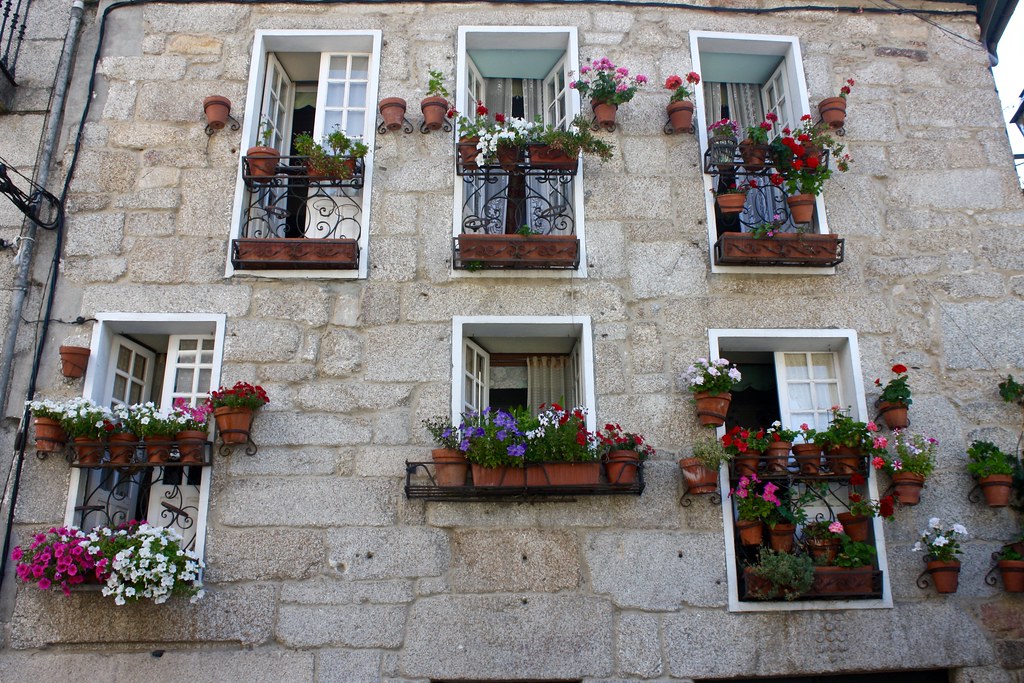 |
| House with planters |
My friends and I drove here, but you could totally take the high-speed train from Santiago de Compostela and then transfer at Ourense to the slow diesel train that skirts the Miño river canyon on its way to Vigo.
What do you think of Ribadavia? Are you a fan of Galician-style octopus? Tell me down below in the comments thread!
